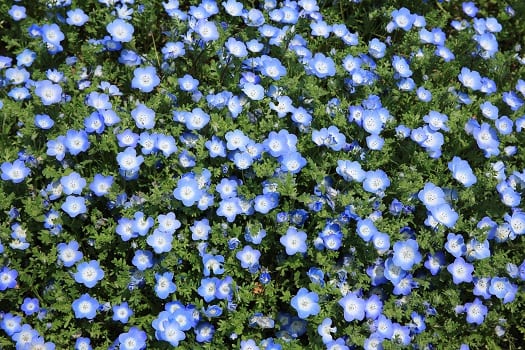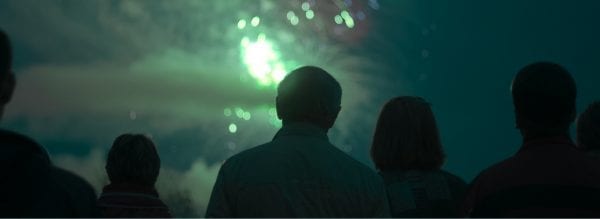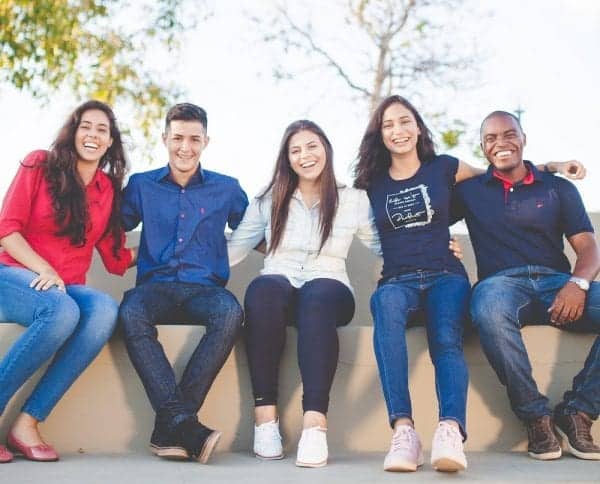Understanding the Hallucinogenic Effects of Flower Seeds
What started out as a YouTube video from a Massachusetts teenager who consumed Morning Glory seeds to get high ended up as something of a public health crisis that put several other children in the hospital. The anonymous and reckless young man self-recorded the effects of what he claimed to be psychedelic plant seeds. The Morning Glory seeds he ingests “definitely make me laugh,” he claimed. As word spread, local police convinced the local Home Depot in Somerset, Massachusetts to pull Morning Glory seeds off the shelves, but the company said that the popular flower seeds would soon be available again. One drug counselor said this incident is evidence that “kids will do anything to get high” and they will largely ignore clearly-defined risks. Most of these flower seed packages, which are widely available, contain warnings that say the contents are not for human consumption, but a simple disclaimer is clearly not enough to deter illicit use. Many people associate drugs with substances that either come out of laboratories or are clearly known to be mind or mood-altering substances. But the truth is that these drugs are everywhere, and if there is a way to get high off flower seeds, someone will discover that method and others will replicate it.
“Get your loved one the help they need. Our substance use disorder program accepts many health insurance plans, this is our residential program.”
Teenage Drug Use and Abuse By the Numbers
On the surface, the latest statistics in this area are very encouraging. Opioid, marijuana, alcohol, and nicotine use are all at nearly historically low levels. It should be noted, however, that these statistics are largely self-reported and therefore are probably biased. In surveys like these, many respondents give pollsters what they believe to be acceptable answers as opposed to honest answers. Many people will say they exercise regularly even if they are almost completely sedentary, some chain-smokers will insist that they smoke less than a pack a day, and many drug users will insist that they are abstinent. There are also some rather disturbing trends in terms of the different types of addiction. Specifically, many children do not perceive drugs to be as dangerous. For example:
- A near-record number of eighth-grade students believe that the occasional use of synthetic marijuana or abuse of over-the-counter cold medicine is not particularly harmful.
- Fewer tenth graders think that inhalants or even powder cocaine are dangerous.
- Most high school non-users do not disapprove of their peers who experiment with LSD, steroids, heroin, or cocaine.
Furthermore, according to a separate study, teenage stress levels are very high, well exceeding that of their parents. The average teen reported a stress level of 5.8 on a 10-point scale; the average number for adults was 5.1. Approximately a third of teens said they felt overwhelmed, sad or depressed, and that their anxiety causes tiredness or fatigue. Significantly, however, well over 50 percent of teens said that their elevated stress levels did not affect their physical or mental health. Add it all up, and you get an environment that encourages widespread drug abuse. Teens face some of the highest anxiety levels in recent history, yet they do not feel that their stress is a major concern. In fact, to alleviate this stress, they may turn to substance use and abuse. Not only is it “nbd” (no big deal in textese), many children know they will not face repercussions from their peers, and in many cases, peer acceptance is about the only thing that matters.
“We treat both addiction and co-occurring disorders and accept many health insurance plans. Take a look at our inpatient program.”
Getting High off Morning Glory Seeds
Many teens abuse legal drugs, because they are relatively cheap, very easy to acquire, and have little or no social stigma. Morning glory seeds, which are available at Walmart, Home Depot, and countless other retailers for a couple of dollars, are the epitome of cheap and available. Furthermore, there is a long history of children getting high on Morning Glory seeds, going back to at least the 1950s. Chemically, Morning Glory flower seeds contain rather high levels of Lysergic acid amide (LSA), an alkaloid that’s chemically similar to LSD. To obtain the effects of these and other hallucinogenic seeds, most people eat Morning Glory seeds or grind them up and add them to drinks. People who abuse Morning Glory seeds in this way nearly always leave behind some telltale signs that alert observant parents and caregivers. The evidence includes:
- Type of Seed: Not all Hallucinogenic seeds are created equally. Some types of seeds, such as Heavenly Blue, provide more of a high than some other classifications.
- Amount of Seed: Since each seed only contains a tiny bit of LSA, the people who abuse them will buy lots and lots of seeds. Between 300 and 400 seeds usually generates the desired effect for teens.
- Nausea: Our stomachs are not used to unrefined food, so people who eat raw seeds will be very nauseated for at least an hour. The effects will be even worse if the person has eaten anything in the last six hours and so the stomach is not completely empty.
- Mellowness: As nausea begins wearing off, the psychedelic effects begin. The first stage is usually a near-catatonic state in which the person is almost totally unresponsive to most stimuli.
It’s important not to rush to judgment, because sometimes a stomach ache is just a stomach ache. However, if there is more than one sign or if the signs persist, it’s important not to turn a blind eye, or the problem will get worse. Instead, reach out to us for a free confidential addiction assessment. If there is an issue, we offer a wide variety of non-threatening procedures that get results.
Why Do Children Use Hallucinogenic Flower Seeds?
Morning Glory flower seeds and other similar sources are very attractive starting places for teens who are curious about drugs yet wary of “street drugs.” However, as mentioned earlier, many children do not appreciate the dangers of such substances, so first-times are probably more likely to experiment with actual LSD instead of something they consider to be a cheap copy. So, most flower seed users fall into the second category, which are current addicts looking for a new way to get high. Many parents and caregivers believe that drug addiction is essentially a social problem that can be solved by taking away certain drug use tools, limiting the child’s access to money, and forbidding certain associations with certain friends. But addiction is a medical issue that a time-out simply does not fix, even if the child wants to stop using. Therefore, with the normal sources cut off, these children look for alternate ways to get high. Because they are cheap and available, Morning Glory seeds fit the bill quite nicely.
Other Similar Drug Abuse Issues
In addition to Morning Glory seeds, there are some other natural substances that have similar effects if used in certain ways. Many of the substances on this list may surprise most parents and caregivers. It’s very important for adults to be totally apprised of the situation because family therapy is often the best form of drug addiction recovery.
- Hawaiian Baby Woodrose: Like Morning Glory flowers, this climbing plant also contains LSA. These seeds are much more powerful, as only three or four Argyreia Nervosa seeds may produce the same high as three or four hundred Morning Glory seeds. The aforementioned side-effects are usually much worse as well unless the user takes very special precautions, and most people do not do so.
- Banana Peels: The 1967 Donovan song Mellow Yellow was supposedly about smoking banana peels, which do contain high bananadine levels (another LSD cousin). But the evidence is anecdotal at best. Some people get high by smoking banana peels and some people just get sick, probably because bananadine also contains strychnine, a common rat poison.
- Stipa Robusta Seeds: This story goes back even further. Supposedly, some railroad surveyors in 1854 New Mexico Territory could not escape a sudden Indian attack because their horses grazed on sleepy grass the night before and were therefore immobile. Many people observe similar effects in other animals, and according to some, various Indian tribes used sleepy grass blades to quiet colicky babies. Even though sleepy grass does contain LSA, its effects on humans are mostly anecdotal. Today, researchers focus mostly on how to use sleepy grass commercially, since it requires less water than other species.
- Nutmeg: This spice contains myristicin, which creates hallucinogenic effects if consumed in very large doses. Many users do get high, but they also usually develop serious side-effects that include extreme gastrointestinal problems and flu-like symptoms. Similar to the high from Morning Glory seeds, a nutmeg high does not kick in for several hours, so some children will overdose because they think they have not taken enough.
- Poppy Seeds: These seeds are directly related to opium and therefore heroin, and it is technically possible to make a poppy seed cigarette. But one must use an enormous amount of seeds and break them down chemically, and that’s usually not possible.
Other hallucinogenic seeds and herbs include high amounts of cilantro and certain types of mushrooms. Many people also consume marigold seeds to get high.
“We accept many health insurance plans. Get your life back in order, take a look at our residential program.”
What Parents and Caregivers Should Do
Although drug addiction may be rooted in social rebellion and poor choices, addressing these issues is only part of the solution. Drug addiction is a medical problem as well, and so there must be a medical solution. Many adults know how hard it is to give up overeating, smoking, drinking, and other unhealthy habits. Giving up drugs is much, much harder, and it nearly always requires more than willpower alone. High amounts of LSD or similar hallucinogens can cause permanent brain damage, so if your child shows the signs of drug abuse, do not ignore them. Instead, contact us at Northpoint Recovery today to get the help your family needs and the peace of mind you deserve. We accept many health insurance plans.



